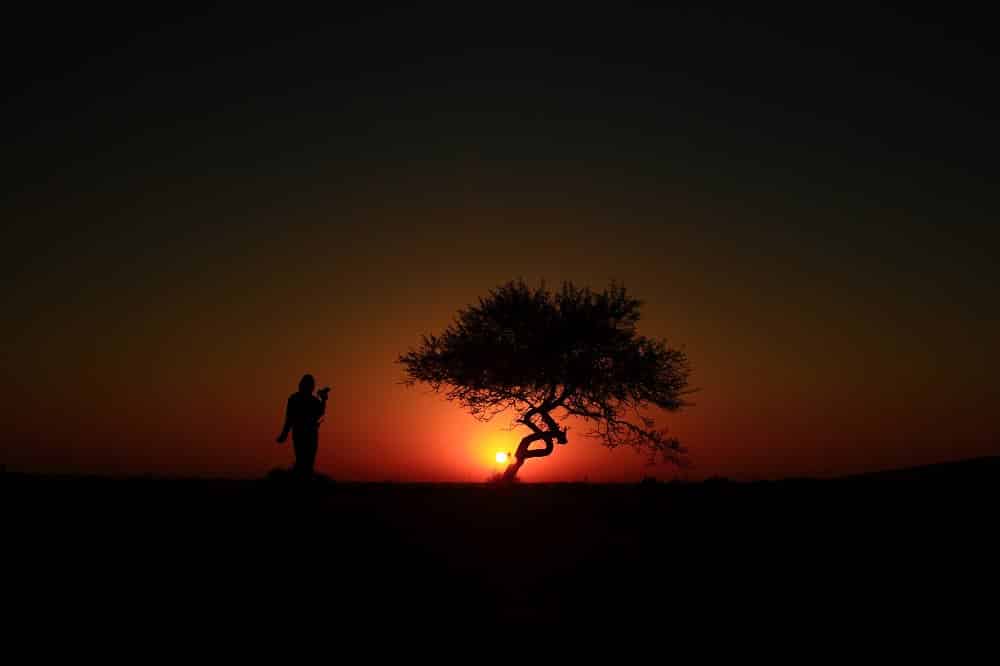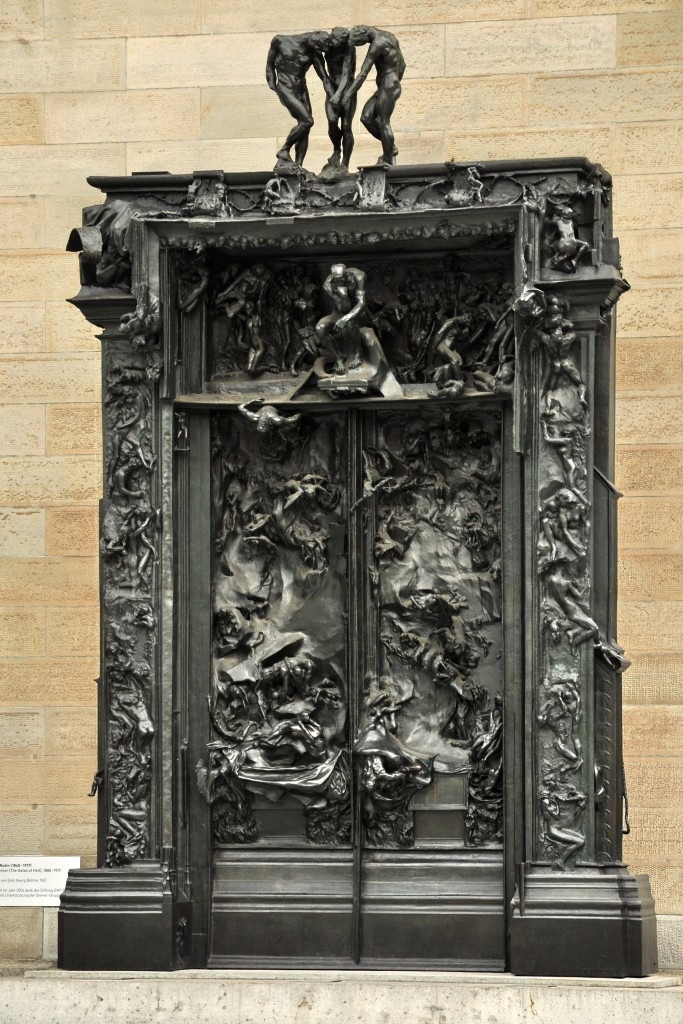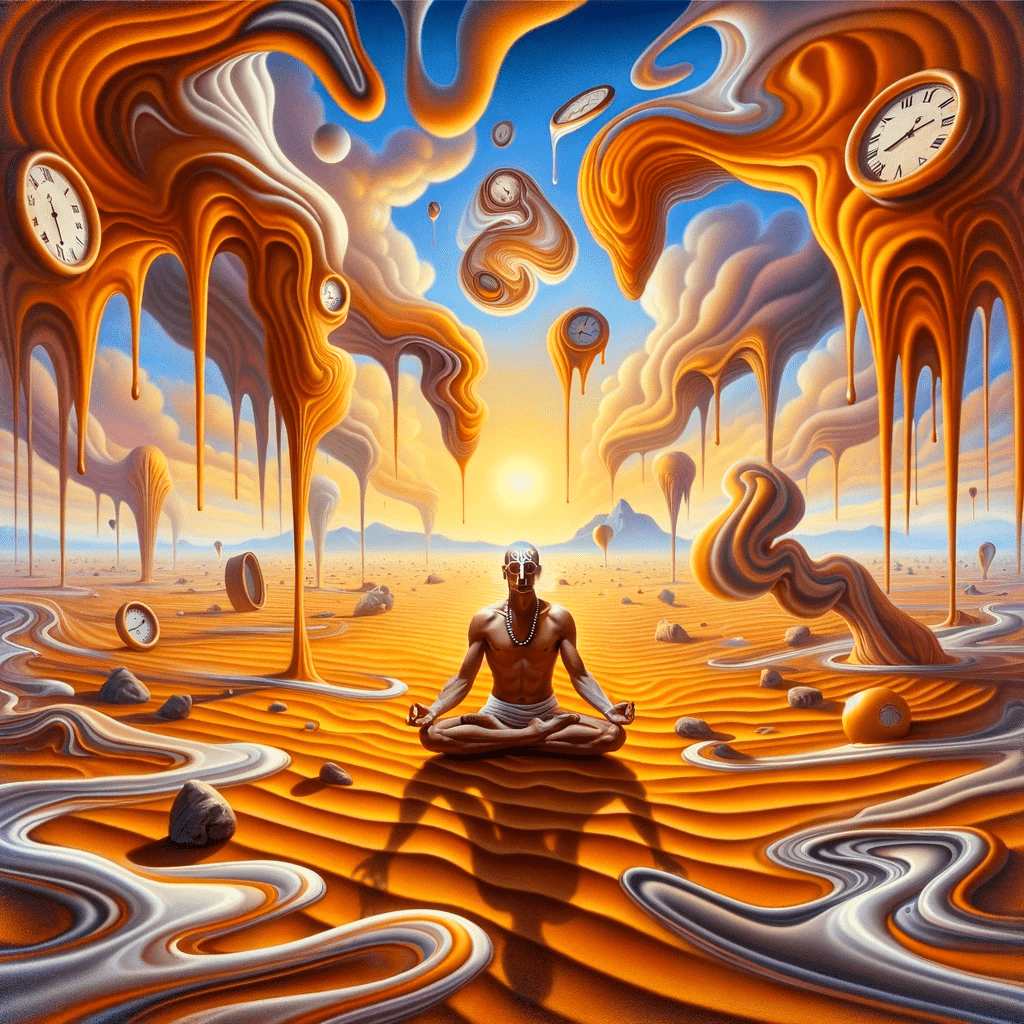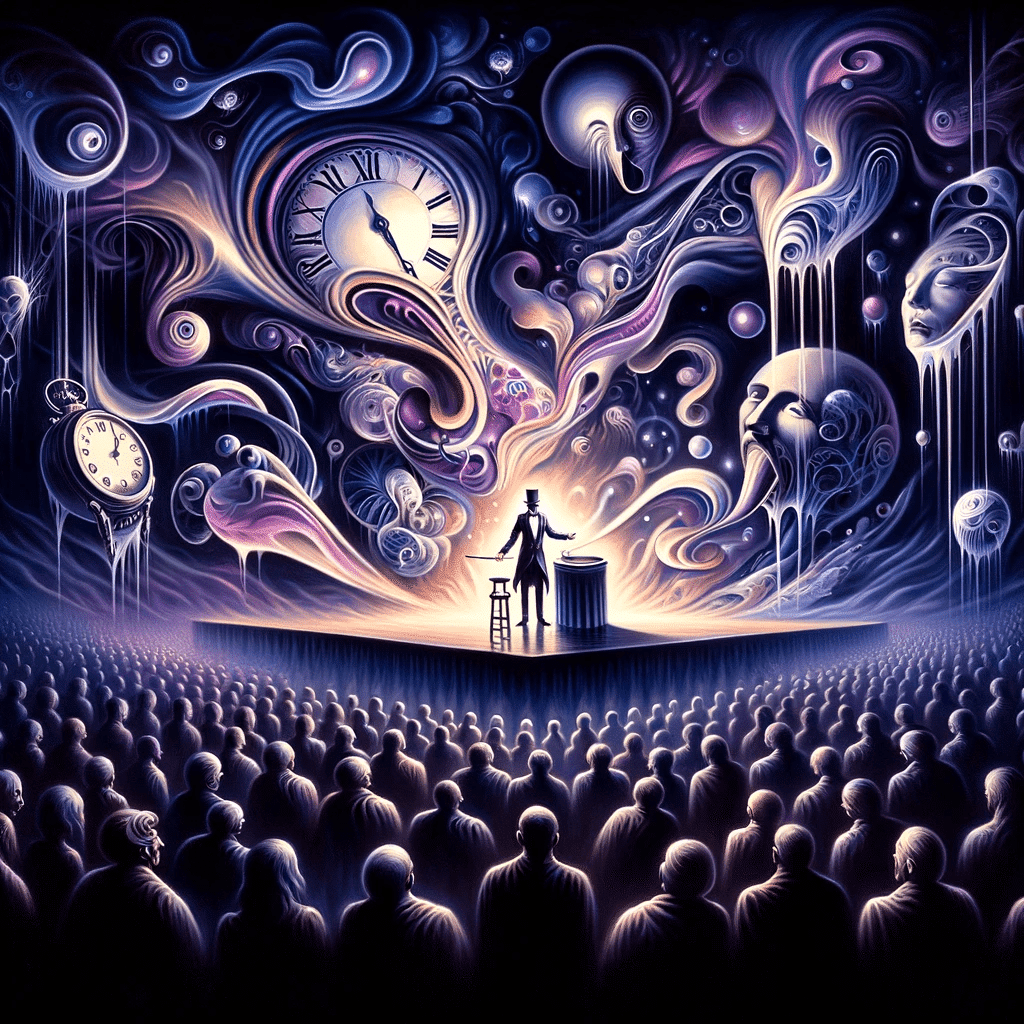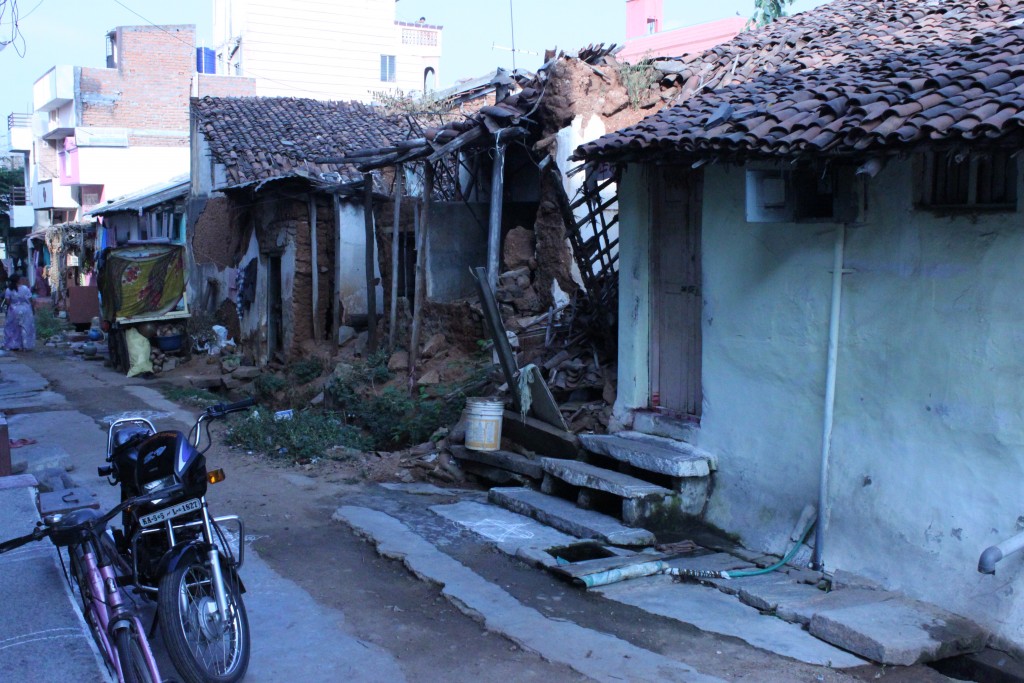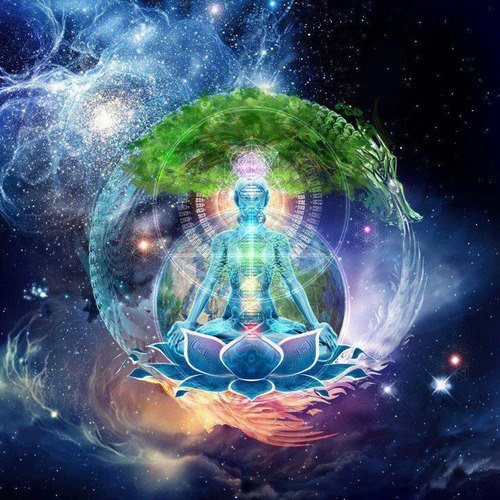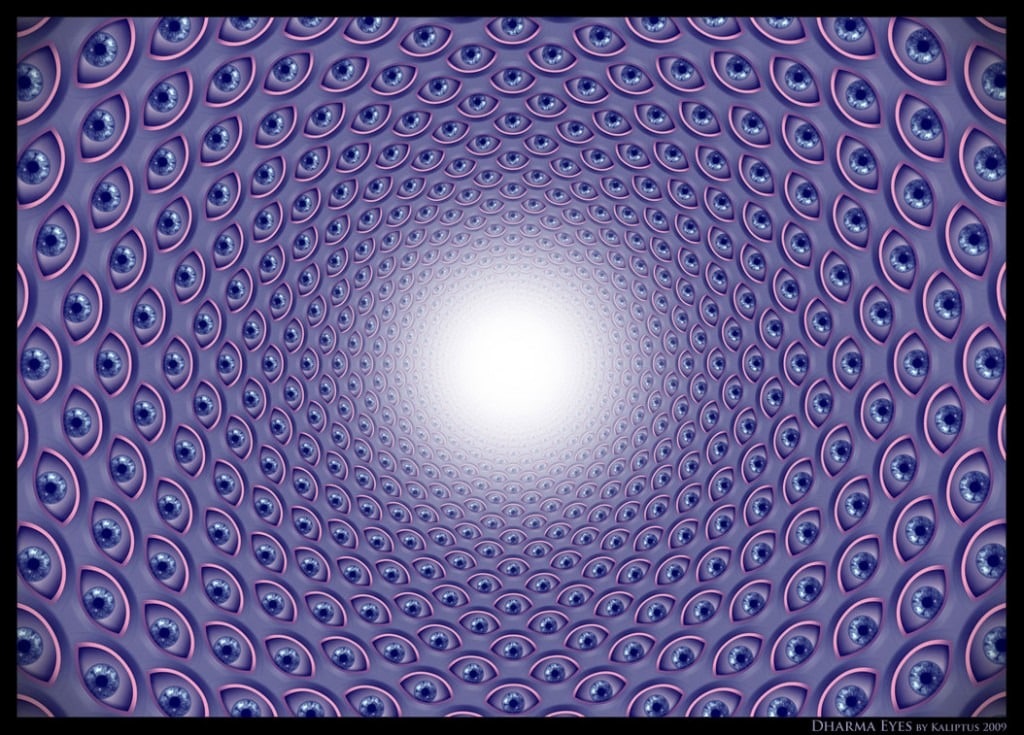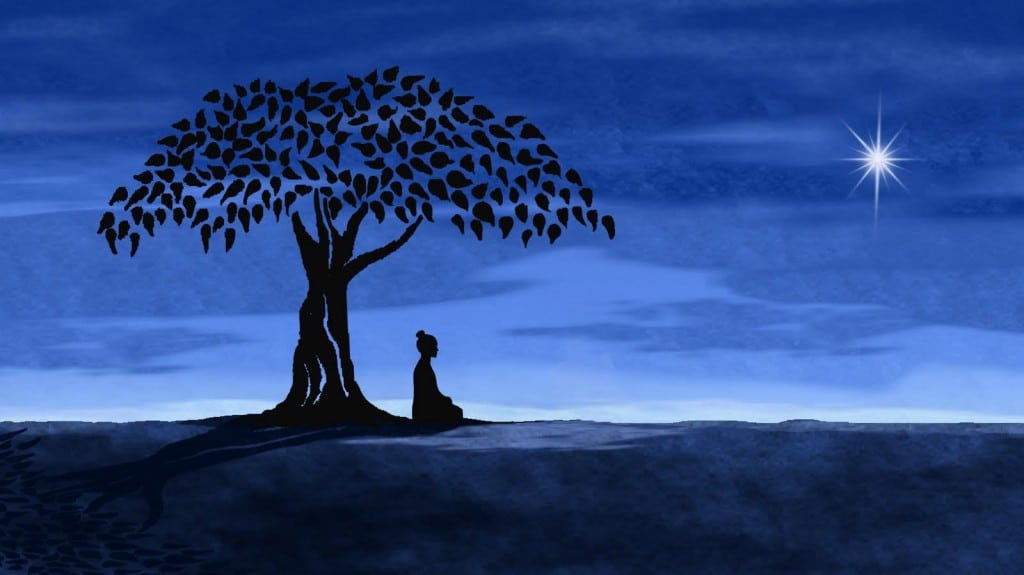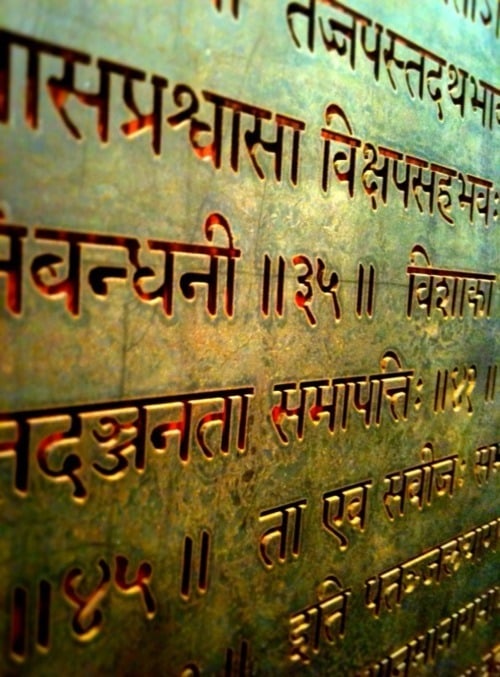The Wanderer, Part 2
Please read the first part of the story here: The Wanderer, Part 1
There was once a boy, who decided that he would follow a wanderer into the desert to learn about god. The boy’s name was Tas. After receiving the approval of his parents, he travelled into the desert in the apprenticeship of a wandering wise man to find perfect bliss, realization of the divine, and to learn god.
They walked until the small town once a few hours had passed in silence, the boy began to ask the sage questions. However, the desert man did not respond. At first he listened, but upon hearing the boy’s questions, the teacher dismissed his words. The boy fell silent, angry that he had been duped into following an old man who wouldn’t talk.
Finally, they came to a tree, alone in the vast expanse of desert, rising into the setting sun like a monolith of entangled roots, branches, and a thick trunk supporting a massive web of leaves fanning out in all directions.
Upon arrival, the old man seemed to inspect some different areas of the tree, then he hit some things, moved some rocks, then he grabbed under a protruding root for a small sack. Inside, Tas could barely make out some old and dusty looking jars and a few scrolls. The old man grabbed one of the smaller jars and a small but very sharp knife.
Then the sage, slow as usual when not walking in the hot sun, took his time to uncover a hidden pot and then gathered some stones to place in a circle for a fire. The grass was a dead golden brown, and the sun was setting down into the horizon, purple and pink streaks of light shone through the powerful clouds illuminating the sky. Tas’ stomach rolled on itself; he was just starting to realize the effects of walking all day without eating. He clutched his stomach.
“We can eat now?” He said simply, not wanting to offend the sage, fearing that his meal might depend upon it. The sage looked at him for a long moment and waited. Suddenly, he laughed.
Tas was confused. Who was this man who had led him astray into the desert and seemed to know the way so well. He thought the man was holy and knew of god and that sort of thing, but he was beginning to think that this man was simply insane and very poor.
The old man laughed again, as if he knew what the boy was thinking. “You don’t think twice about god now. Funny, how easy we forget.”
The boy had no idea what the man meant. Yes, he was on his journey to god. What was the old man talking about? Surely he didn’t need to focus on his mission every moment of the day.
“I don’t think about god because I am hungry.” Tas said slowly, uncertain of the old man’s eccentric responses. He looked up from his arranging of stones, which he had been finishing for the last 5 minutes. He began to use the knife to cut wood from the tree for the fire. Tas wondered how long it might take.
The sage seemed to move even slower. He made no response to Tas, which just proved to infuriate him further. Tas’ stomach was beginning to really hurt now, he could not remember ever going a day without a meal.
He watched as the old man slowly started a fire, using a flint and tinder that he carried with him. Tas was preoccupied with his stomach, it was really starting to growl now. The sage heard the low rumble and laughed. He asked Tas with a freshly curious tone, “you are hungry, yes?”
Tas responded, “Yes, of course, can you not hear my stomach?”
“Yes, of course I hear. You are the only sound here for many steps,” he laughed to himself, Tas had no idea what the joke was. He only grew angrier each time the old man laughed.
He began to take out some rice, and some water from his pack and heated the water in the pot. He was in a jolly mood indeed, seemingly more so each time Tas grunted with pain from his stomach.
Finally, the rice was finished, the old man added some spices, some nuts, and some dried vegetables that he stirred in with the rice. A couple of minutes later, the old man finished splitting the second half of the rice and placed it at the boys feet. The boy moved to eat…
“Wait!” the old man exclaimed, pushing Tas’ chest up from the floor. Tas groaned furiously.
“I cannot wait! I have never been so hungry in my life!” the boy said, now beginning to feel the pain subside a little less than it was before.
“You want to know god?” The old man looked directly into Tas’ eyes, they seemed to see right into him, and Tas couldn’t help but shiver. Goosebumps lined his hand and legs even though the night was quite warm, but the old man continued to stare. He looked into the embers of the fire and remembered his father, his mother, and the suffering they endured. He remembered his grandfather, whom he had just barely know, but he knew from his father that the man was great, honorable, loved by the whole family.
“Yes, I want to know!” The boy’s anger seemed to spill out, all of his rage accumulated in the words and he couldn’t help but feel the quiet breeze settling around him. The night seemed to grow quieter and twilight was in full bloom, a nearly full moon bright in the sky.
“Good,” said the old man, slower than before. His eyes were closed and he seemed to sway in the breeze. “Then we wait.” Tas stared at the old man for a moment before realizing that he was not going to open his eyes.
“What do we wait for?” Tas said, agitation lacing his voice poisonously.
“Until you are the wind, you wait. Close your eyes. Listen. Breathe slowly. Listen.”
Realizing suddenly that this was his first lesson, Tas immediately shit his eyes and began to listen. But he soon found himself adjusting his sitting. He found that he could not stop thinking about how hungry he was no matter how hard he tried to listen. He started to play with his fingers, waiting for the old man, he couldn’t listen with this hunger in his mind.
The old man, without opening his own eyes, said, “Close your eyes. Do not think of your stomach. Think of god.”
But this only served to perplex the boy more. They were out in the wilderness, under a tree, in the middle of nowhere. How could he think about god here? So he decided to try one more time. He closed his eyes, and this time, took a big breath in. As he inhaled, he could feel his chest expand and as he listened to his breath, he could hear the softness of the wind playing with his breath.
Immediately, the old man laughed, and said, “Good! You know already to learn. This is good. Tomorrow we learn more. Now we eat.”
The boy had forgotten about the food, just for a moment. He had forgotten about everything. He could still feel the breath, but never in the same way. He re-realized his hunger when he began to eat, then almost immediately fell to sleep. He did not think of a blanket, or even of his home, only that one moment, where he had felt so free.
The Wanderer, Part 2 Read More »

